Just to the north-west of Frankfurt, Germany is an area known as Oberursel, Taunus. (It is located in the Taunus Mountains and a short distance to the east is the small town of Falkenstein, Königstein im Taunus where I lived in the 1960s⏤just thought you’d like to know.) During World War II, this was the site of a transit camp for downed Allied airmen where they were interrogated before being sent to a permanent POW camp. Twenty-years before my family moved to the area, the Oberursel camp had become an American army interrogation center and intelligence post. Between 1945 and 1953, Camp King (named after Col. Charles B. King) served primarily as a location for interrogations of captured war belligerents and the post-war process known as “denazification.” Some of the camp’s “guests” were Karl Brandt (the physician responsible for Aktion T4, Hitler’s euthanasia program), Reich Marshal Hermann Göring, Gen. Alfred Jodl, Field Marshal Wilhelm Keitel, and Mildred Sisk Gillars (a.k.a. “Axis Sally”)⏤click here to read Hitler’s Directives, here for Extermination Camp Doctors, and here for Hitler’s Enablers.
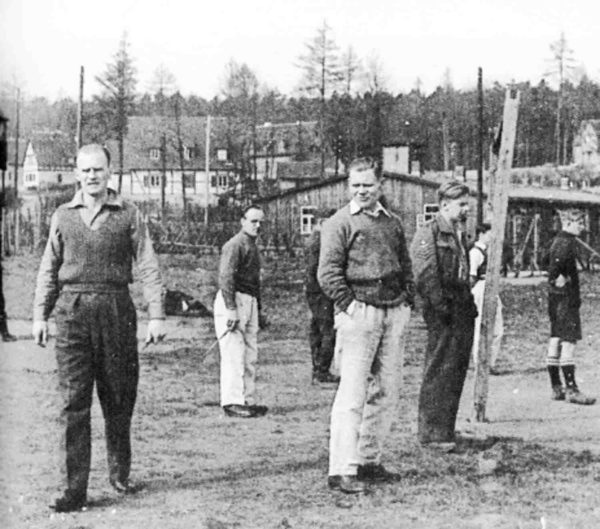
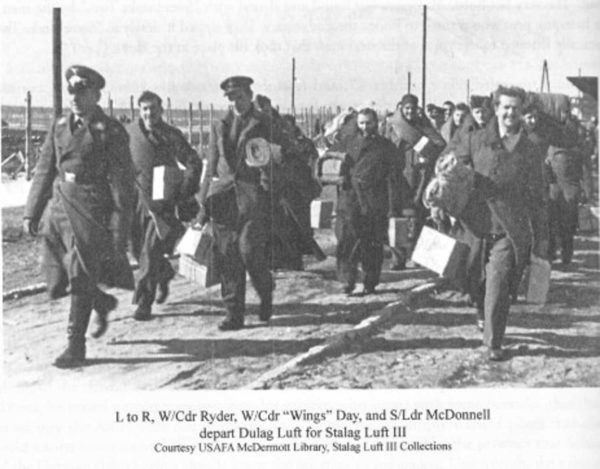
However, today’s discussion will pick up around July 1946 when a former German general, Reinhard Gehlen, arrived at the intelligence post. It is a story of how the United States spared certain war criminals because of their expertise in areas perceived to be a threat from the Soviet Union. These men (whom the Soviets and the Allies were competing to obtain their services) included scientists, engineers, doctors, and within the context of our story, the intelligence and counter-intelligence world (i.e., spies).
Did You Know?
Did you know that a German concentration camp was built on British soil during World War II? Lager Sylt, or Camp Sylt was one of four camps constructed by Organisation Todt on the British island of Alderney in the Channel Islands. It was a forced labor camp (a subcamp of KZ Neuengamme) run by the Schutzstaffel Totenkpfverband (SS Death’s Head Unit) and it quickly became more than just a labor camp. Built in 1942, Sylt was originally intended to house two hundred political prisoners for the purpose of building fortifications as part of Hitler’s Atlantic Wall. However, by 1943, more than one thousand men (including Jewish deportees) were inmates of Sylt. Survivors gave testimonials about their 12-hour workdays of heavy construction, very little food, and beatings by the guards that often resulted in death. Horrific conditions included flimsy wooden huts that couldn’t keep out the wind and cold (five feet of living space per inmate), starvation, beatings, executions, and the Nazi policy of Vernichtung durch Arbeit, or “Annihilation (extermination) through work.”
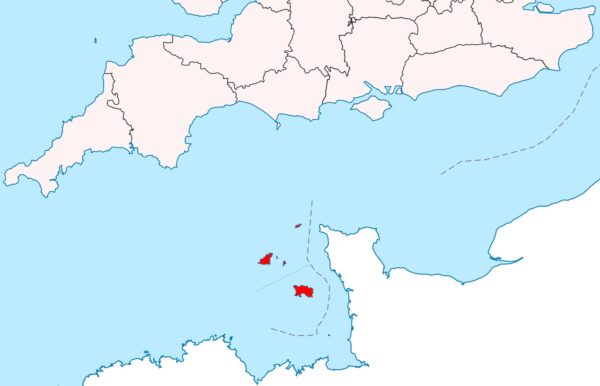
The existence of the camp was withheld from the public by the British government despite three thousand interviews with surviving inmates, witnesses, and German soldiers. The files were not declassified until 1981 and the official report did not fully explain all the atrocities committed by the Germans. German records indicated only 103 prisoners died at Sylt because of “faulty circulation” or “heart failure.” Recent archeological excavations have uncovered mass graves of at least seven hundred people. There is virtually nothing left of the camp except several entrance posts, some concrete foundations, and an underground tunnel. Historical, forensic, and archaeological work is being performed by Staffordshire University and over time, they hope to piece together new information on the camp and the experiences of the forced laborers.
Alderney is called “The Island of Silence.” With conservation status (i.e., no development allowed) and continued archaeological work, perhaps the island will get to change its nickname.
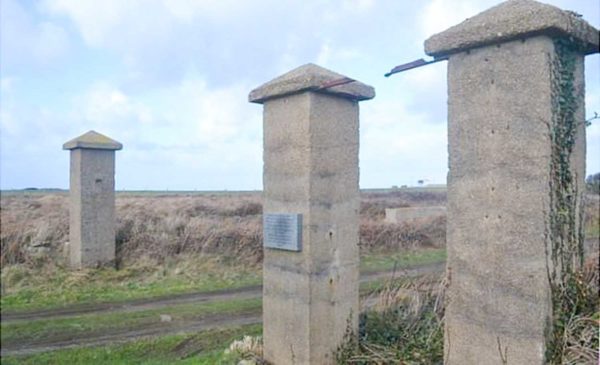
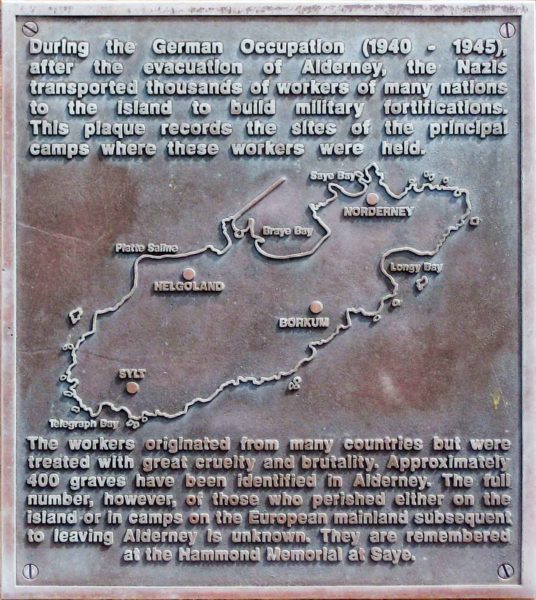
Click here to watch The Nazi Concentration Camp on British Soil.
Reinhard Gehlen
Reinhard Gehlen (1902−1979) was a professional German soldier who graduated from the German Staff College in 1935 and rapidly rose in the ranks of the Wehrmacht. By mid-1941, he was promoted to lieutenant-colonel and was transferred to the Eastern Front as a senior-intelligence officer in the Fremde Heere Ost (FHO), or Foreign Armies East. (There was also a Fremde Heere West group.) This was the military intelligence group initially assigned to gather statistical and technical data on the foreign armies that Germany was fighting. After Hitler invaded Russia in June 1941, the FHO responsibilities were to analyze and gather intelligence information on the Soviet Union and other Eastern European countries.
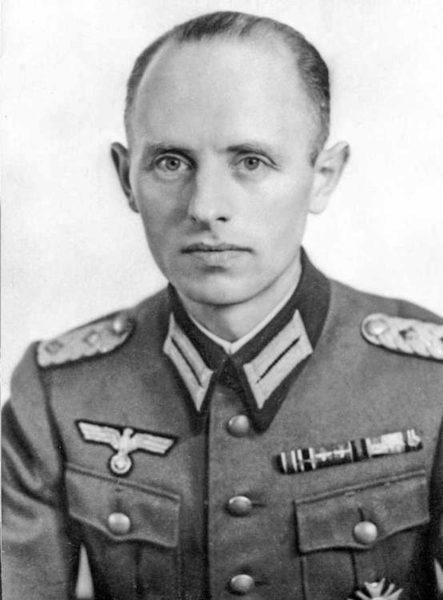
In the spring of 1942, Gehlen was promoted to head the FHO. He soon determined the FHO was not very sophisticated and needed to be reorganized. He brought in specialists and built the organization into an effective and professional military-intelligence gathering unit. However, by 1943, Gehlen had become convinced Germany would lose the war (as did many other German officers). He also predicted there would be future conflict between the United States and the Soviet Union. His plan was to microfilm as many documents as possible and then offer his services to the Allies for post-war anti-Communism intelligence. Gehlen’s other activity around this time was participating in the plot to assassinate Hitler. After the failure of Operation Valkyrie in July 1944, Gehlen’s involvement in the assassination attempt never surfaced, and he escaped Hitler’s wrath.
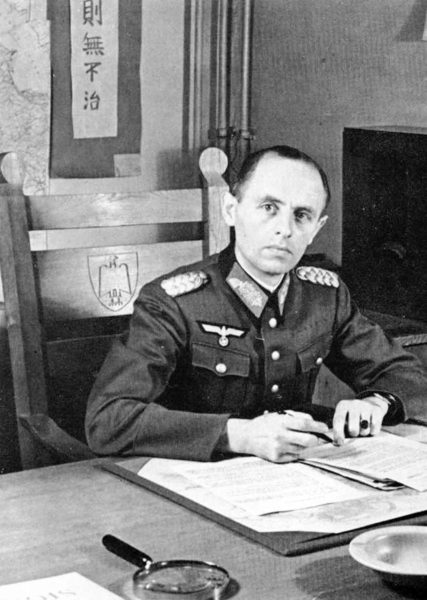
Gehlen’s FHO produced quality intelligence material. He presented the Führer with evidence that Germany would lose the war against the Soviet Union. His efficiency was met with dismissal by Hitler who labeled it as “defeatism” and Generalleutnant (Maj. Gen.) Gehlen was fired by the Führer. He and his team went into hiding in Bavaria until they saw it was safe to surrender to the Americans in May 1945.
FHO Military Intelligence
Gehlen’s FHO team collected military and political intelligence concerning the Soviet Union. Captured Red Army soldiers provided much of the information. When I say, “provided much of the information,” it was usually under duress. Gehlen’s intelligence officers tortured and starved the Soviet prisoners. Murder was also part of their play book. In addition to Germans working for the FHO, Gehlen hired Ukrainian thugs (as well as from other Slavic countries) to assist in the interrogations. These were members of right-wing collaborationist organizations, typically para-military groups. Croatian and Ukrainian leaders were responsible for some of the most atrocious crimes against humanity (even the Nazis were appalled by some of their activities).
As previously mentioned, Gehlen predicted the Red Army would invade and occupy Germany and he ordered all intelligence material to be transferred to microfilm, stored in drums, and hid. That material became his bargaining chip as well as likely saving him from prison or the gallows.
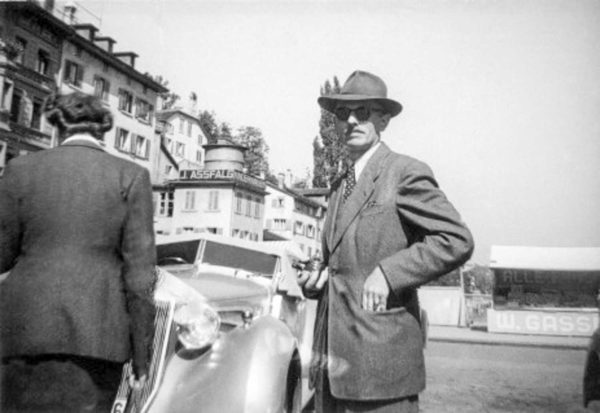
The Gehlen Organization
Gehlen surrendered to the United States Army counterintelligence group in May 1945. In exchange for being set free, he offered to turn over the microfilm documents. Sensing the former German intelligence officer might be more useful as an employee rather than a prisoner (click here to read the blog, Hang ‘Em or Hire ‘Em), the Americans sent Gehlen and three of his top assistants (including former SS-Obersturmführer Heinz Felfe) to Washington DC where they could be interrogated by military intelligence and the Office of Strategic Services, or OSS (the unit that would soon become the Central Intelligence Agency, or CIA). Gehlen met with William Donovan (“Wild Bill”⏤director of the OSS), and Allen Dulles (OSS director of Europe and future head of the CIA). Whatever they discussed, it worked out in favor of Gehlen and his men.
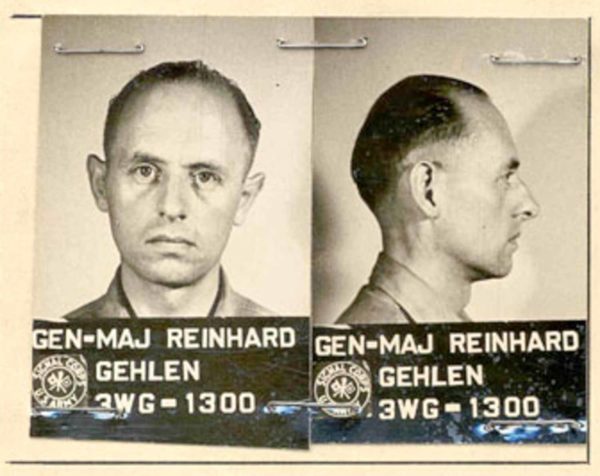
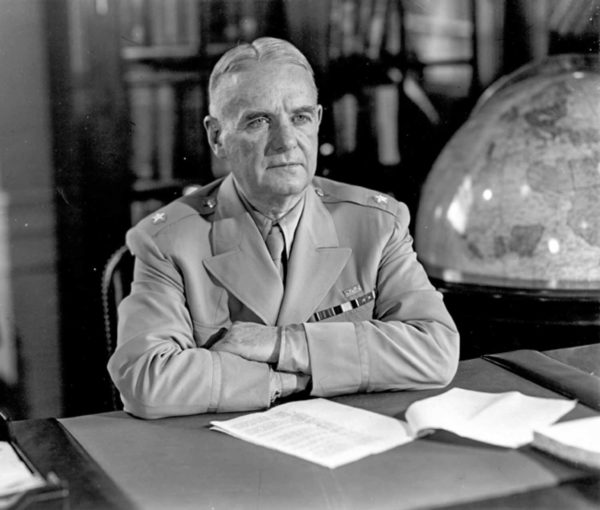

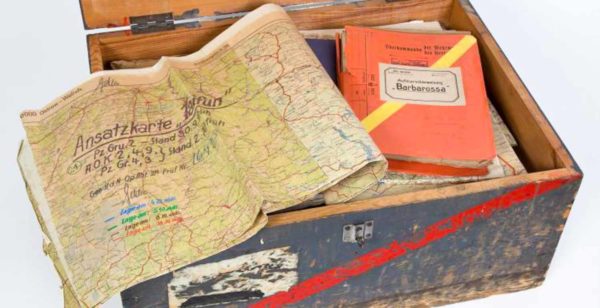
Click here to watch Richard Gehlen-The CIA & The Nazis.
In exchange for dropping charges of war crimes, Gehlen agreed to work for American intelligence. He was to resurrect his team and oversee a vast network of intelligence agents and information. The goal: spy on and gather intelligence data on the Soviet Union and its satellite countries, including East Germany.
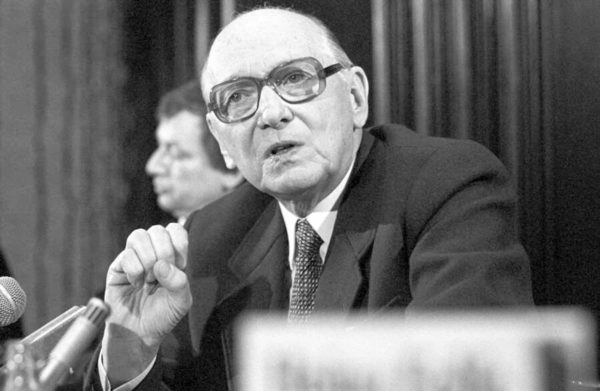
During the summer of 1946, Gehlen arrived at Camp King. He was to head the “anti-Communist intelligence organization,” using the code-name “Operation Rusty.” Two former German espionage experts were already working for the Americans in a nearby safe house: Gerhard Wessel and Hermann Baun. (Baun ran the intelligence group at Camp King before Gehlen arrived and took over.) By 1947, Gehlen’s organization had gotten so large they had outgrown Camp King and the group was moved to a self-contained facility near Munich⏤a village called Pullach. Ironically, the compound was the former estate of Hitler’s secretary, Martin Bormann. Soon, Gehlen had more than six hundred agents working in East Germany and thousands around the world.
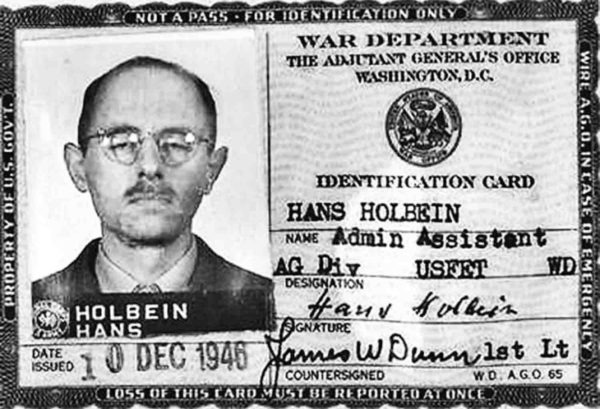
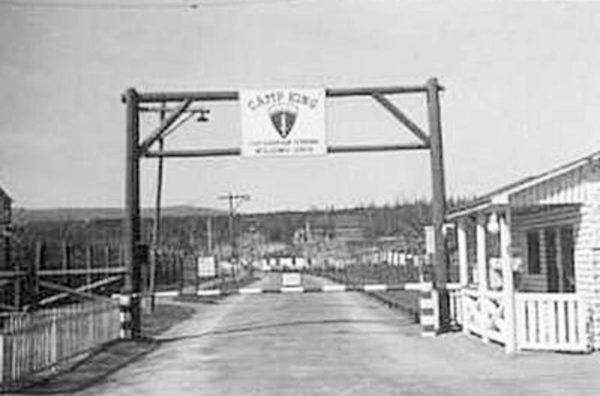
Between 1947 and 1955, every German POW released by the Soviets was interviewed by Gehlen’s team. By 1949, the Cold War was in full swing and Gehlen was getting paid millions per year. For years, the Gehlen Organization (also known as the “Gehlen Org,” or “The Org”) was the only means the CIA had for knowing what was going on in the Soviet Bloc. The Org hired hundreds of former Wehrmacht officers as well as former Schutzstaffel (SS), and Sicherheitsdienst (SD) officers. Gehlen employed such notorious former Nazis as Aloïs Brunner (Adolf Eichmann’s deputy and commandant of Drancy detention camp; responsible for more than 129,000 deportations of Jews to Auschwitz), Emil Augsburg (SS officer responsible for planning the mass executions of Polish Jews), and Karl Silberbauer (Gestapo and SS officer responsible for arresting Anne Frank). One of Gehlen’s top assistants was former SS-Standartenführer Franz Six. This former Nazi was one of the leaders of the Einsatzgruppen, or mobile execution units. Six had been found guilty of crimes against humanity by the Nuremberg tribunal but that didn’t stop Gehlen from hiring him (click here to read the blog, Professor Dr. Six).
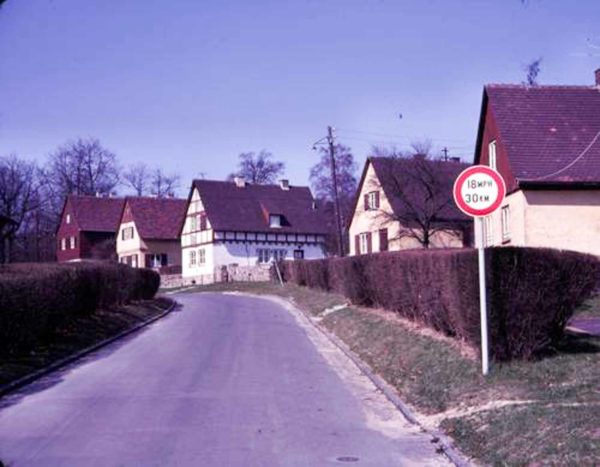
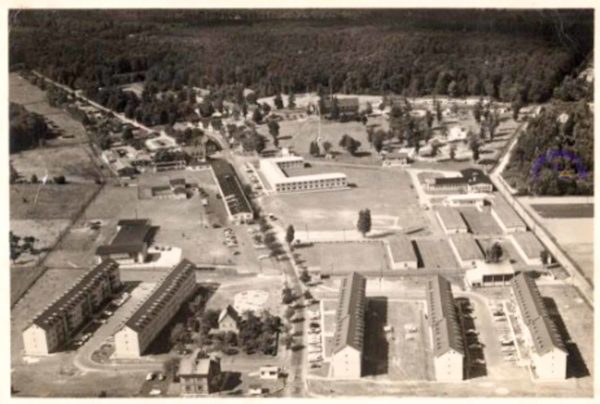
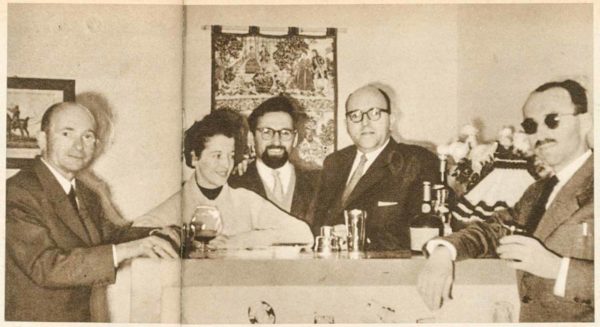
Eventually, Gehlen’s spy business employed more than four thousand anti-Communist agents and hundreds of former Nazis. The American National Security Archive states that Gehlen “employed numerous former Nazis and known war criminals.” Gehlen was given quite a bit of independence and the CIA turned its back on a side business that Gehlen and The Org had established.
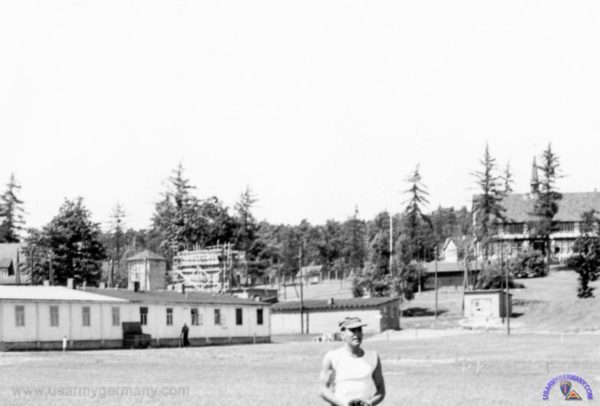
Ratlines
At the same time they were spying on the Soviet Union, the Org was setting up “ratlines,” or underground escape networks for more than five thousand former Nazis. The escape routes took the men from Europe to Central or South America. The CIA supplied safe houses, secret transit camps, ports, and funding. It is likely that Brunner, Adolf Eichmann (architect of the Final Solution of the Jewish Question), Josef Mengele (infamous Auschwitz doctor), and Klaus Barbie (“Butcher of Lyon”) used The Org’s ratlines to escape to South America. (click here to read the blog, ODESSA: Myth or Truth?)
Click here to watch the video Ratlines.
Bundesnachrichtendienst
The Org operated until 1955 when it was turned over by the CIA to the West German government. A year later (1 April 1956), Gehlen and his organization became the nucleus for the new Bundesnachrichtendienst (BND), or Federal Intelligence Service with Reinhard Gehlen becoming its first president.
Eventually, the Org was infiltrated by East German moles who fed information back to Moscow. Additionally, the CIA and British intelligence (MI6) had their share of Communist sympathizers and moles (e.g., Kim Philby) and these sources also fed information to the Soviets. Gradually, the Org and Reinhard Gehlen became known to the world and the press made sure it divulged any information it could get on this clandestine group of former Nazi officers. Gehlen was forced out of the BND in 1968 due to issues such as the discovery of the moles, political estrangement, inefficiencies, and Gehlen’s general mismanagement of the BND (including gross nepotism). Gerhard Wessel succeeded Gehlen and became the head of West Germany’s Federal Intelligence Bureau.
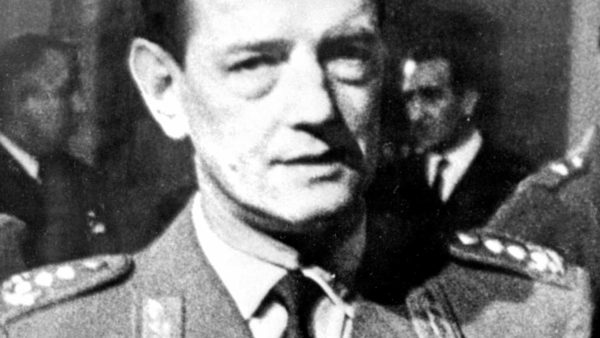
The United States government deactivated the post and returned it to the German government in 1993. Today, the former Camp King is part of an area built up for residential housing.
The official and confidential CIA document, “Who’s Who in Nazi Germany,” was declassified in 2007 under the Nazi War Crimes Disclosure Act. Reinhard Gehlen, the former Wehrmacht general, or any of his top assistants (excluding Franz Six) are not included in the list.
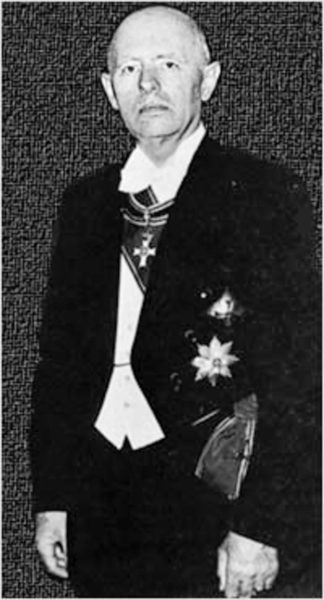
By the way, for all you baby boomers out there, twenty-three-year-old Henry Kissinger’s last post before leaving the American army was Camp King. (Kissinger later went on to become secretary of state under Richard Nixon.)
★ ★ ★ Learn More About Camp King and Reinhard Gehlen ★ ★ ★
Critchfield, James H. Partners at Creation: The Men Behind Postwar Germany’s Defense and Intelligence Establishments. Annapolis: Naval Institute Press, 2003.
Gehlen, Reinhard. The Service: The Memoirs of General Reinhard Gehlen. New York: World Publishers, 1972.
Höhne, Heinz and Hermann Zolling. The General Was a Spy: The Truth About General Gehlen and His Spy Ring. New York: Putnam Publishing Group, 1972.
Jacobsen, Annie. Operation Paperclip: The Secret Intelligence Program That Brought Nazi Scientists to America. New York: Back Bay Books, 2014.
Klarsfeld, Serge and Beate. Translated by Sam Taylor. Hunting the Truth: Memoirs of Beate and Serge Klarsfeld. New York: Farrar, Straus and Giroux, 2015.
Messenger, David A. (Editor & Contributor). A Nazi Past: Recasting German Identity in Postwar Europe. Lexington: University Press of Kentucky, 2015.
Turner, Barry. Outpost of Occupation: The Nazi Occupation of the Channel Islands 1940−45. London: Aurum, 2011.
Wachsmann, Nikolaus. KL: A History of the Nazi Concentration Camps. New York: Farrar, Straus and Giroux, 2015.
Disclaimer:
There may be a chance that after we publish this particular blog, the video links associated with the blog are no longer accessible. We have no control over this. Many times, whoever posts the video has done so without the consent of the video’s owner. In some cases, it is likely that the content is deemed unsuitable by YouTube. We apologize if you have tried to access the link and you don’t get the expected results.
What’s New With Sandy and Stew?
Sandy and I haven’t been very productive recently. One nice thing about being retired is that we can watch every game of the Euro 2020 tournament. We just finished watching France go down to Switzerland on penalty kicks. What an exciting game! That is why football is a “beautiful game.” Well, except for my friend Roland who picked France to go all the way. C’est dommage mon ami.
Thank you to all of you who subscribe to our bi-weekly blogs. It seems there isn’t a day that goes by where we don’t increase our readership. Please let your history buff friends and family members know about our blog site and blogs.
Someone Is Commenting On Our Blogs
I’d like to thank Patrick M. for his comment from our blog, Diplomatic Lessons and Warning Signs (click here to read). I mentioned that we had decided to go to Berlin after completing the two volumes about the occupation of Paris. Patrick agreed with our reason for pushing off the cemetery book. Thanks Patrick.
If there is a topic you’d like to see a blog written about, please don’t hesitate to contact me. I love hearing from you so keep those comments coming.
Why Would You Want to Buy Our Walking Through History Books?
Simple.
You like to travel and experience history and historical events. You like to see original buildings that had a significant impact on the people and events of the history you’re engaged with. You want to know the stories behind the brick and mortar in front of you.
The walking tour books are meticulously researched so you can go directly to those sites and learn about the building’s history as well as an introduction to some of the more interesting people associated with it.
We Need Your Help
Please tell your friends about our blog site and encourage them to visit and subscribe. Sandy and I are trying to increase our audience and we need your help through your friends and social media followers.
Thank You
Sandy and I appreciate you visiting with us. We have some exciting things on the horizon, and we’ll keep you updated as we go along.
Share This:
Follow Stew:
Find Stew’s books on Amazon and Apple Books.
Please contact Stew directly for purchase of books, Kindle available on Amazon. Stew.ross@Yooperpublications.com or Contact Stew on the Home Page.
Please note that we do not and will not take compensation from individuals or companies mentioned or promoted in the blogs.
 Walks Through History
Walks Through History
Copyright © 2021 Stew Ross

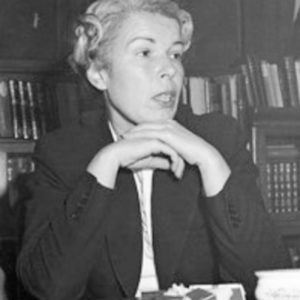
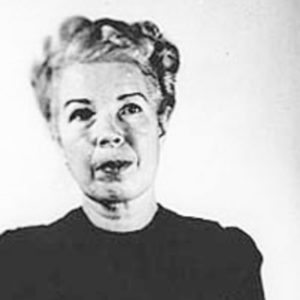





Hi Stew,
Really enjoyed this weeks blog on Camp King and the post war Gehlen / Wessel intelligence activities. My Father will enjoy this snapshot of history – will read it to him later.
Always an interesting day when your blog arrives. Thank you.
Pat
Hi Pat, thanks for the comments. I hope Stan will enjoy the story. Perhaps he knew about Camp King when he was working for British intelligence? STEW
My 94 year old father was a guard for the Camp (I believe 1945). What material would you suggest I share with him for a look back at his time there.
Hi Dean; I always get a little excited when a son, daughter, or relative of the men and women I write about contacts me. To answer your question, I suppose images of Camp King would likely stoke the memories he has of his tour at Camp King in 1945. My father is ninety-two and I try to share as many photos and videos with him as possible. I hope we can continue a dialogue as I would be interested in learning more about his experiences. Thanks for reading our blog and I hope you might consider subscribing to the bi-weekly blogs. STEW
Very interesting, but please note a few mix-ups, for example, Gehlen and six of his men from FHO were flown to the US in August 1945 to be interrogated/ share intelligence about Soviets at Fort Hunt, VA, “PO Box 1142.” They returned to Germany a year later to then set up shop at Camp King. Felfe was not part of that group. In fact, he wasn’t recruited by the org until 1951; he did, however, join Gehlen and BND colleagues on a trip to the USA in 1956, courtesy of the CIA.
Thank you Ingrid for reaching out to us. I appreciate you pointing out this out. I will go back and correct the errors. STEW
Hi Ingrid; thank you for reaching out to us. I appreciate your feedback and I will followup on this information. Once I confirm the “mix-ups,” I will revise the blog. Again, thanks for the information. STEW
Hello, Stew,
My name’s Fred Schloss, and I lived on CK from about May of 1960 to July of 1964. Graduated from Frankfurt High. I have enjoyed reading the results of your research. My father was Arthur “Art” Schloss. He was either CIC or MI for the majority of his career. I know that he retired from the Army at Camp King, but stayed on as an interpreter/interrogator specializing in Order of Battle, I guess you’d say. Are you by any chance related to Colonel Franz Ross? I do have some memorabilia from my dad’s career, some of which is funny and some of which is not. I do know that Dad was CIC in Bad Hersfeld (our second tour in Germany) and in Giessen (our first). Some of his stuff has been lost during various moves, but I even have the Colt revolver that he carried. (Yes, it was possible to carry privately owned weapons in the Army. He did, and so did I.) If you wish, I could probably photograph a couple of things and send them to you.
Hi Fred; Thanks for commenting on the blog with both Mark and myself. Let me know if you’d like me to contact Mark and give him the heads up that you left a comment. I’m not related to Col. Ross. I did have three uncles in the war; two by the name of Ross. I would be interested in seeing some of the memorabilia your father left you. Interesting about Frankfurt High. I went to school in Frankfurt as well. Not for very long (we moved there from Holland) and I think the school was the American School of Frankfurt. Not too sure and my 93-year-old father can’t remember. Anyway, thanks for reading the blog and I hope you enjoy future ones. STEW
Lived on Camp King from 61-Dec 65 in my teen years. Seen some strange happening on and around that base. As it was the 513 intel at that time. Major defection by one of our own happened while I was there. A lot of so called Spooks came and went. Some people were moved around a lot not staying for more than a year. But the real treat was what we found in the woods around that base.
God! I wish I had a IPhone back then.
Hi Mark; Thanks for contacting us about Camp King. Was your father stationed at Camp King? Sounds like you might have some very interesting stories. Can you share with us? Thanks for reading the blog and we hope you enjoy not only past blogs but the future ones. STEW
HI, Mark,
I was a dependent at Camp King from 1960 to June of 1964. I’m sure we must have known each other. Did you go to FHS?
My father was, at times, CIC and/or MI. He retired from the Army while we were still there, and then went to work as an interpreter/interrogator. We flew out of Germany on July 16, 1964 and was ready to return to Camp King on July 17, 1964.
Would you be Mark Thorne, by any chance? If so, you and I were friends until we graduated from FHS and we all went our separate ways. I usually hung out with Steve Downs (RIP), Tom Maguire, and Mike Thomson (RIP).
Would you be Mark Thorne, by any chance? If so, you and I were friends until we graduated from FHS and we all went our separate ways. I usually hung out with Steve Downs (RIP), Tom Maguire, and Mike Thomson (RIP).
HI, Mark,
I was a dependent at Camp King from 1960 to June of 1964. I’m sure we must have known each other. Did you go to FHS?
My father was, at times, CIC and/or MI. He retired from the Army while we were still there, and then went to work as an interpreter/interrogator. We flew out of Germany on July 16, 1964 and was ready to return to Camp King on July 17, 1964.
Hello Stew, I stumbled across this while I was making sure I spelled Oberursel correctly and low and behold I have a close connection to Camp King. I was born at the hospital there in 1957, my father was stationed there. But also at Kransburg where operation paperclip was affiliated. Are you aware of any reliable books on the subject? I do have a document with many of the detainees signatures and I’d like to decipher them – one is Axis Sally’s.
Your assistance would be appreciated and I thank you for keeping these stories alive.
Hi Marlane; thanks for contacting us regarding the blog, “Camp King.” What a coincidence! Last week another reader got in touch with us regarding his father who was a guard at the camp. One of the German detainees gave his father a water color illustration of several cabins. At the bottom, many of them signed the picture. I wrote a blog, “Hang ‘Em or Hire ‘Em” about four years ago. It was the brief story of Operation Paperclip. At the end of each blog, I always reference books pertaining to the blog’s topic. Additionally, you might want to use Wikipedia articles on these two subjects. While Wikipedia can be a dangerous place to rely on factual data, the reference sections at the end of the articles tend to provide a good place to look for books or other material. Hope that helps. If not, let me know and we can continue our discussion. STEW
Hi Stew, I was stationed at Camp King in 1967-68 in a 3 man special unit called TAREX Detachment B (Target Exploitation) under Hq US Army Security Agency, Frankfurt, after returning from a TAREX tour in Vietnam. We were attached to the 18th Military Intelligence Bn and had duties to debrief all east block refugees and defectors for information on military codes and signal communications. information sources were provided by West German Government (BND- Bundesnachrichtendienst). It was a lovely military post with a lot of small houses built prior to WWII. The Main Street was lined with sweet cherry trees. In my 20 years it was my favorite assignment.
Hi Glen. Thanks for contacting us about the blog. It’s interesting that this particular blog generates the highest number of responses. Sounds like you probably have some very interesting stories. I’d love to hear about some of them. Thanks for subscribing to the bi-weekly blogs and we hope you enjoy both future ones as well as the past blogs. STEW
I lived In Camp King from 1963-1966. I remember a big alert when a Polygraph operator stationed there defected.
Living there as a little kid was great–all these old half-timbered houses. Our quarters looked out over the big cow pasture with the Feldberg behind it–and a tower that lighted up at night (When we returned to Frankfurt in 1969, the cow pasture was gone and they were building stuff there). I am still fond of Holstein cows because of that.
It was really idyllic for a little kid, but then I was barely 7 when we left.
Saturday matinees, too. and the little convenience store (the Delicatessen) where we could buy popsicles for three cents.
Hi Paul; Thanks for contacting us about Camp King. That blog has produced many responses, most of which are from children of the men who were stationed at the base. Sounds like good memories. Similar to the other comments we’ve received. I lived in the suburbs of Frankfurt for six months before moving back to the States. Anyway, thanks again for taking the time to reach out to us. Hope you enjoy our future bi-weekly blogs. STEW
My father was stationed at Camp King after the war. He was Polish American, and as Polish was his first language, he served as an interpreter. He met and married an Oberursel girl and they married in 1948. My father passed in 1984 and now my grandkids asking about family history and this is one of the subjects that fascinates them. Always good to hear from others about that time in my dad’s life.
Hi Christine, thanks for contacting us. This blog seems to generate the highest volume of responses. We get many comments from children of the men who served at Camp King in various capacities. Your father is the first time we’ve heard about an interpreter. I’m sorry your father passed away at such a young age. I hope he left memorabilia and stories. Many of the men never talked about their wartime experiences. I hope he was the exception. Again, thanks for reaching out to us. STEW
My father was a Captain at Camp King and he, my mother and I lived in Oberursel for 3 years. We came over in December 1949 on the Queen Elizabeth in the worst storm in 100 years. I have a lot of stories to tell, including my personal meeting with General Eisenhower in the 50s.
Hi Beth; thanks for reaching out to us. The Camp King blog seems to be the one that attracts the most emails to us. Like you, they are all from sons and daughters of the men who served at Camp King. One of them sent me photos of the autographs his father collected including Axis Sally. I am interested to hear about your stories. Let’s discuss offline. Best. STEW
Hi Beth, thanks for reaching out to us. This blog has generated the most comments from our readers. Like you, most are children of the men who served at Camp King and spent some of their childhood at the base. Looking forward to your stories. STEW
Would you be Mark Thorne, by any chance? If so, you and I were friends until we graduated from FHS and we all went our separate ways. I usually hung out with Steve Downs (RIP), Tom Maguire, and Mike Thomson (RIP).
Stew
I just happened upon your posts. I arrived at Camp King as an enlisted and was assigned to the Operations Branch. One afternoon in August 1965, I was called back to the office around 5:00 PM, at which time I was advised of the defection of SFC Glen Rohrer. Contrary to what Wikepedia says, he was not assigned to Camp King, but rather our Frankfurt office. I prepared the damage assessment of his defection for the 513th, the CIA and our other allied intelligence agencies. I was there in the War Room from 5:00 until midnight, as the ID info of our assets behind the Iron Curtain filled three pages, three columns on each page, single-spaced. I learned later that these assets were told by secret radio transmissions to get back to our side ASAP, but few, if any, made it back. The CIA estimated that Rohrer’s defection set our effort back 10 years, and it is my opinion that it was his defection that led to the 513th leaving Camp King in 1968. I have really enjoyed reading your posts and look forward to reading more!
Bob Goldasich
Hi Bob; Thanks for getting in touch with us. Enjoyed your firsthand account of the spy world. This is just one of those stories that has been lost to time. I did some quick research and didn’t find much on Rohrer. However, he did give a four-part interview to the Czech government newspaper and stated that after 13-years as a military intelligence analyst, he became disillusioned. He believed the US government was more serious about destroying Communist governments than it was hunting down Nazi war criminals. Again, thanks and I hope you enjoy our past and future blogs. STEW
Stew, this is very interesting, My family moved from England to Germany with my father’s job and we lived in Oberursel from 1963 to 1965, during which time I was a student at Frankfurt International School which is part-way up the Feldberg. If I remember correctly, it was at Hohemark, and I travelled there each day by Straßenbahn. I visited Camp King once, and I still have photos which I took on that occasion of an American Football game in which one of my schoolmates was playing. Learning about the history of the Camp after all this time is fascinating, so thank you. As far as Königstein is concerned, another of my American school mates and I sneaked out of our homes late at night and climbed into the castle, which we explored. I still remember this over 60 years later, partly because I found it very spooky, and partly because this was the first time I had ever seen fireflies.
Hi Neil, thanks for contacting us. We just missed one another at the Frankfurt International School as I was a year or two after you. I also have great memories of climbing around the castle. We called it “Dracula’s Castle.” Ha ha. STEW